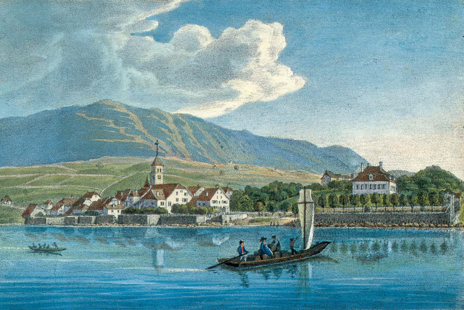BEHIND THE NAME
Taking a stroll around the old Arinis village, today called Saint-Blaise, you'll be able to uncover stories but also history. From the palafittes found in the lake to the old wheel, including the ceramic found on an old roman road, this small region near the Neuchâtel Lake in Switzerland is a small jewel demanding to be discovered. Come discover the depths of celt civilisation on the shore of the lake with your new ELKA Diver's watch. The Arinis watch has been inspired by all the history surrounding the wonderful region of Saint-Blaise. Ceramics was found on an old roman path, imposing the idea of a ceramic made bezel. The old wheel, being a strong and intrinsically regional object, has given it's colour to parts of the collection. The ingraved fishes at the back of the watch are a small hint to the fascinating artifacts found in the lake. A thousand years of history, wrapped around your wrist.
The village of Saint-Blaise was built in the time of Charlemagne (800 AD). It was initially known as Arins, or even Arens, but this was replaced by Saint-Blaise in 1280. The name Arins (Arinis in Latin) appears for the first time in 1011 in a deed by which King Rodolphe III of Burgundy gives his fiancée several towns and villages, including Neuchâtel, Auvernier and Arins. Arins was a favourable location: it was close to the lake, the upper part of the town was in a dominant position and, above all, there was a river, the Ruau, which could be used to power mills and other machinery.
